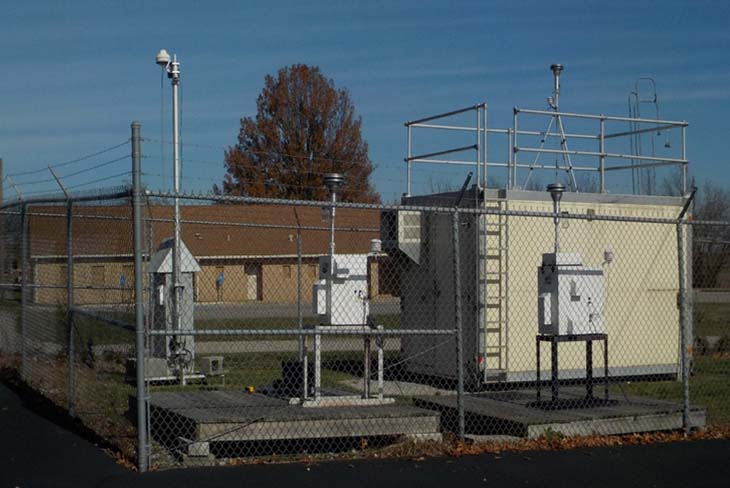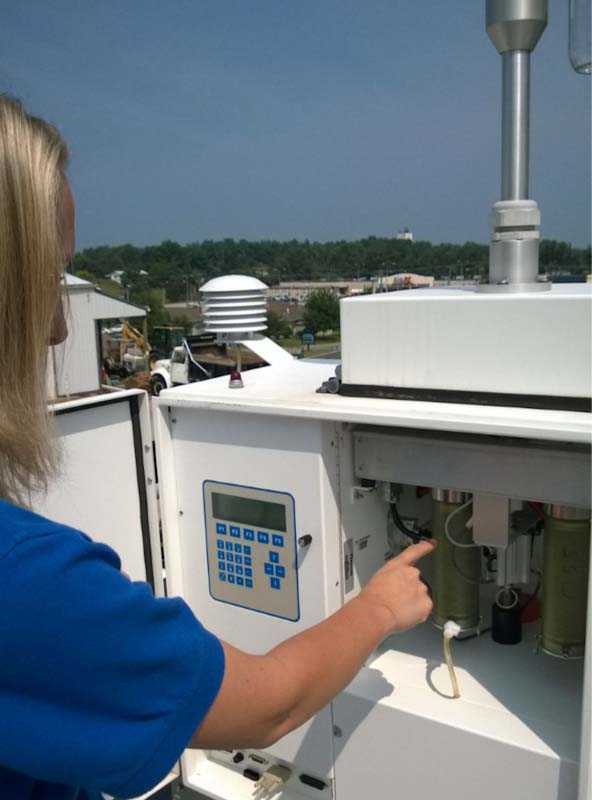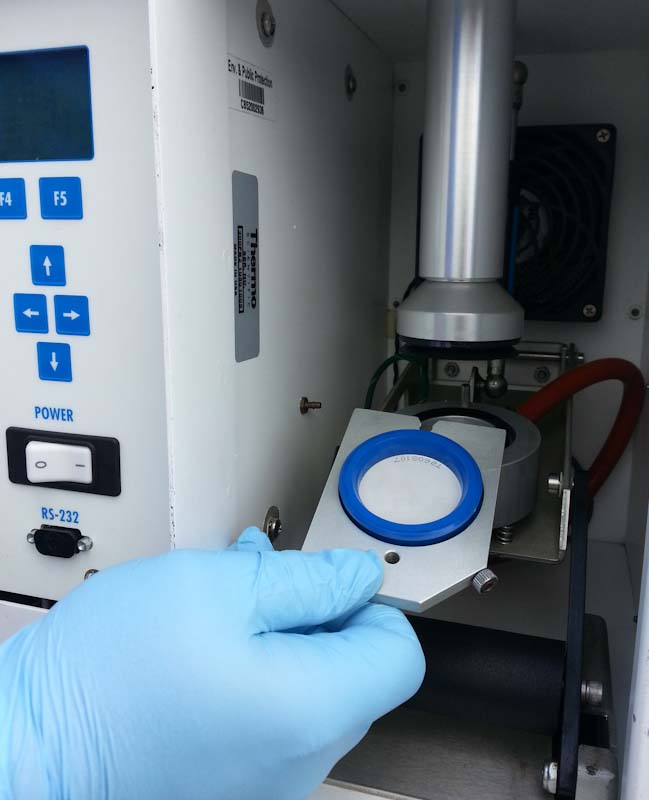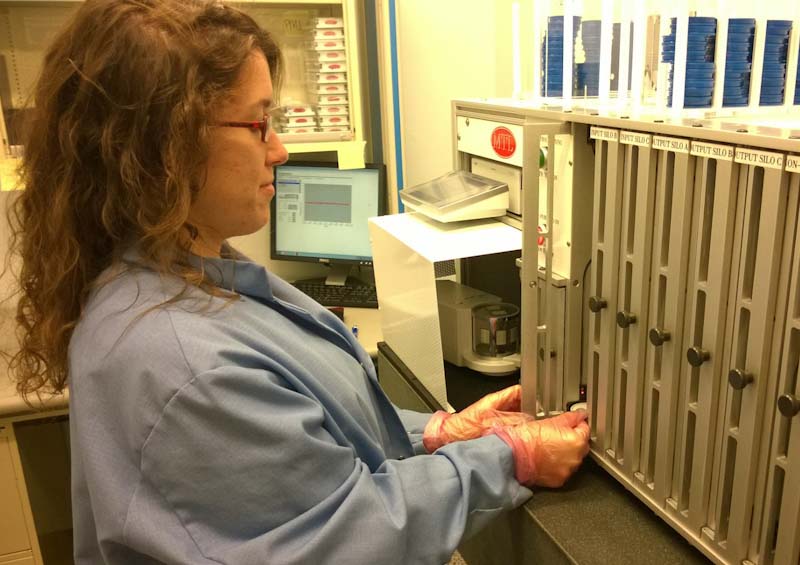Introduction to Air Monitoring
Air monitoring is the key to understanding air quality. Kentucky's monitoring network includes instruments that analyze the air continuously as well as instruments that collect samples every few days. Detailed information regarding specific methods and instruments can be found in the division's Annual Air Monitoring Network Plan.

A typical air monitoring station with both continuous and manual samplers.
Continuous Monitors
Continuous monitors sample and analyze ambient air 24 hours a day, seven days a week. The instruments are housed in temperature-controlled shelters. While calibrations and maintenance must be performed by an air monitoring specialist, the instruments operate automatically and can be left unattended for several days.
Data from continuous instruments are transmitted electronically from the air monitoring site to the division's headquarters for further processing. Some of the data are transmitted in near-real time for calculation of the Air Quality Index (AQI), which is posted on EPA's AirNow website.
Ozone, sulfur dioxide, oxides of nitrogen and particulate matter are analyzed in the Kentucky network using continuous monitors.

Continuous monitors and data acquisition system
Manual Samplers
Manual or intermittent samplers collect a 24-hour sample on a predetermined schedule, usually once every three or six days. Samples of air are collected in a canister or onto a filter, which must be set up and retrieved by an air monitoring specialist.
Since these instruments cannot analyze the air, the samples must be sent to a laboratory for analysis. Particulate matter (PM10 and PM2.5), lead and air toxics samples are collected using manual methods.

An air monitoring specialist points to the canisters holding filters for a PM2.5 manual sampler.

Retrieving the filter from a manual sampler.

A scientist weighs the filters in a laboratory.
An air toxics sampler.